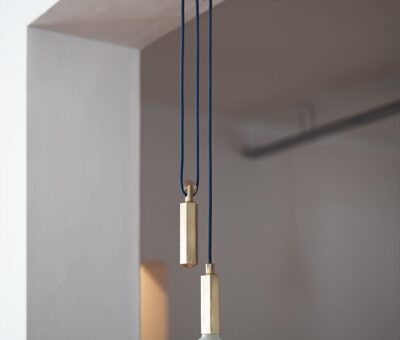Designing For Mood: How Lighting Transforms Room Vibes
In the realm of interior design, lighting does more than ensure visibility—it stands as an art, a science, and a powerful tool in influencing mood. You might enter some rooms and immediately feel uplifted, while others invite relaxation. These sensations are crafted by careful lighting design. Proper lighting shifts the ambiance to align with the room’s intended vibe.
Lighting encapsulates a room’s essence. More than mere illumination, it shapes emotions, influences the perception of space, and guides interaction. Explore the profound impact of lighting in the following sections below.
- Function And Form: Utility Meets Elegance
Indeed, the primary role of lighting is illumination. Can functionality not also embrace elegance? Contemporary designs integrate these concepts, delivering efficient lighting that doubles as a design element.
Consider switches and sockets. Their placement, design, and accessibility are as vital to a room’s aesthetics as the lights themselves. Eco-friendly bulbs or smart lights that adapt to the day’s progression are not only sustainable choices but also embody chic solutions, embedding function into room design.
- Directional Dynamics: Spotlight And Emphasis
Imagine your room as a stage and you as its director. Directional lighting steers attention, accentuating focal points—whether artwork, a reading corner, or a distinguished vase.
Track lighting, inherently flexible, facilitates dynamic focus. Today’s highlight might be an artwork; tomorrow, it might be a classic bookshelf. Such versatility fosters room evolution.
Conversely, recessed lighting produces distinct, vertical rays, enhancing spaces, introducing rhythm, and yielding a structured appearance in sync with a room’s inherent elements.
- Space Perception: Altering Dimensions
Proper lighting can make any space feel expansive and open, regardless of size. Corner lights or wall sconces can extend visual boundaries, conjuring depth illusions.
Ceiling lights, particularly those casting upward shadows, suggest loftier ceilings. Don’t let room dimensions restrict you. With astute lighting choices, even small spaces can seem expansive and inviting.
- Layers Of Lighting: Sculpting Depth
A room often benefits from more than just a single light source. Integrating multiple light sources introduces depth, richness, and a nuanced experience.
Begin with ambient lighting to determine the general room tone. Introduce task lights for specialized functions and accent lights to underline features. Each layer serves a purpose, and in unity, they craft a harmonized lighting display, marrying function with mood enhancement.
- The Ambiance Alchemy
Through ambient lighting, you can shape a room’s very essence. Gentle, dim light could transport you to a charming Parisian café, while vivid, spirited lighting reflects the midday sun.
Studies affirm the influence of lighting. The right ambiance can uplift mood, amplify productivity, and even diminish stress. It transcends intensity to resonate with emotion.
For ambiance selection, consider the room’s function. A study room might thrive under lively lights, while a bedroom might prefer softer, subdued hues.
- Shadows And Drama: The Dance Of Contrast
Lighting also involves the play of shadows. The balance between illumination and darkness introduces drama, allure, and character. Focused spotlights or suspended lights can cast intentional shadows, forming patterns or emphasizing textures.
These shadowed spaces become as prominent as the illuminated regions. Masterfully deployed, shadows can emphasize room elements, attract attention, or craft visual illusions, infusing depth and personality.
- Adaptable Lighting: Evolving With Moments And Moods
A room’s atmosphere is dynamic. The vigor of the morning can transition to a peaceful afternoon followed by a snug evening. Adjustable lighting accommodates this fluidity.
Dimmers, straightforward yet impactful, modify brightness to match the moment. Cutting-edge lighting solutions can even transition colors, presenting a dynamic experience attuned to the moment. Remember, lighting should adapt as the room’s occupants change.
- The Emotional Spectrum: Light’s Psychological Play
While colors undeniably shape feelings, lighting magnifies this effect. A brightly lit room can cultivate joy and enthusiasm, whereas subdued lighting might inspire contemplation or relaxation. Lighting extends beyond sight to sculpt emotional experiences.
Opt for soft, warm lighting in relaxation areas to foster calmness. On the other hand, work or study spaces might thrive under brighter, cooler lights to promote concentration. Grasping the emotional intricacies of varied lighting empowers you to craft areas that align with the intended emotional atmosphere.
- The Palette Of Colors: Beyond Standard Tones
Lighting is your room’s paintbrush, bestowing it with diverse shades and moods. Move past the conventional yellow or white bulb to unveil a spectrum of colors that sway perception and emotion.
Shades inspire emotions: blues induce calmness, reds invigorate, and greens rejuvenate. Integrate these with your room’s primary colors to amplify or contrast, setting distinct moods.
Observe the psychology between light color and wall hue. Warm orange light against a blue wall might remind you of a tranquil beach sunset, whereas cool blue against pristine white evokes a moonlit night.
In Conclusion
Lighting narrates a room’s silent tale, subtly molding emotions, perceptions, and engagements. By acknowledging and capitalizing on its vast potential, you can tailor a room’s atmosphere to mirror your vision. By making informed choices, you can breathe life into your living space.
You might also like...
-
Track lights enjoy their time in the sun, again. By Eurolux

Did you know that track lighting has been around since the late 1960’s? It’s hard to imagine these fittings were around at the time that ...
-
Hoi P’loy: sophisticated, functional lighting designs

Founded in 2013 by Ploy Phiromnam and Guy van der Walt, Hoi P’loy emerged with a mission to redefine the landscape of custom-designed lamps and ...
-
Sustainable Alternatives with Eurolux.

In a world that increasingly values sustainable alternatives, solar flood lights stand at the forefront of innovation in outdoor lighting. The simple and genius solution ...
-
Lumen8: Bespoke switchgear for every architectural style

Lumen8 is a South African company that specializes in bespoke switchgear. This means that they create custom-made switches and sockets to match any architectural style, ...


























